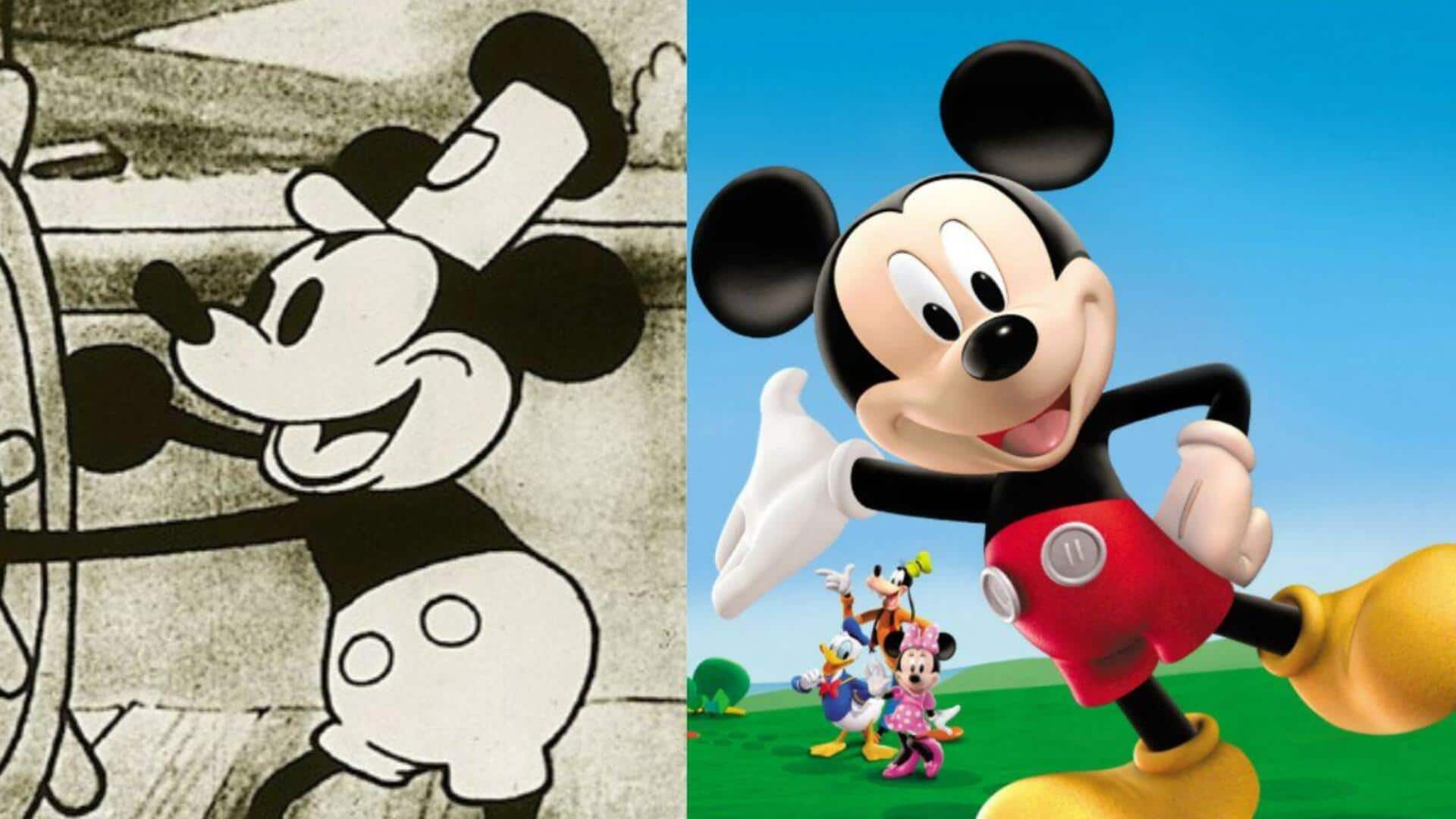
Mickey Mouse's incredible evolution through the decades
What's the story
As an iconic character in American cinema, Mickey Mouse has seen a lot of transformations since his debut. Created by Walt Disney and Ub Iwerks, Mickey made his first appearance in the short film Steamboat Willie in 1928. Over the decades, the character has grown from a mischievous figure to a symbol of family entertainment. His journey mirrors animation technology and cultural trends, making him an American pop culture staple.
Early days
'Steamboat Willie' and early years
Mickey Mouse first appeared in Steamboat Willie, one of the earliest synchronized sound cartoons. It was a turning point for animated films as it introduced innovative sound techniques. From these early days, Mickey was a mischievous character with simple black-and-white animation. He quickly became popular with his charming antics and relatable personality.
Color shift
Transition to color animation
In 1935, Mickey made his shift from black-and-white to color with the release of The Band Concert. This opened the door for more expressive storytelling and vibrant visuals. The use of Technicolor technology made animated films all the more appealing during this period. As color became the norm in cinema, Mickey's adventures became more dynamic and visually appealing for audiences.
Evolving personality
Character development over decades
Over the decades, Mickey transitioned from a mischievous character to one who personified kindness and bravery. This change reflected the era's values leaning towards family-friendly content. By the mid-20th century, he had transformed into a wholesome figure personifying positivity and optimism. Such developments cemented his position as a timeless icon across generations.
Lasting influence
Impact on modern animation
Mickey Mouse's evolution has also left a permanent mark on modern-day animation techniques employed today by studios across the globe. His success paved the way for other beloved characters in the Disney universe. It also influenced storytelling techniques across television shows and video games, with animated characters either modeled after him or inspired by similar archetypes seen throughout global cinematic history.